13 Antique Mirrors That Tell a Story Through Their Frames
Antique mirrors are more than just reflective surfaces; they are pieces of history that tell stories through their frames. From intricate carvings to opulent gilded finishes, these mirrors offer a glimpse into the craftsmanship of past eras. Whether you’re an interior designer, a collector, or simply a fan of vintage décor, these timeless pieces bring character and charm to any room. Each mirror has its own unique story, reflecting the tastes and trends of the period it was made. With styles ranging from Baroque to Art Deco, antique mirrors can complement various home aesthetics.
This post may contain affiliate links, which helps keep this content free. Please read our disclosure for more info.
Baroque Giltwood Mirror
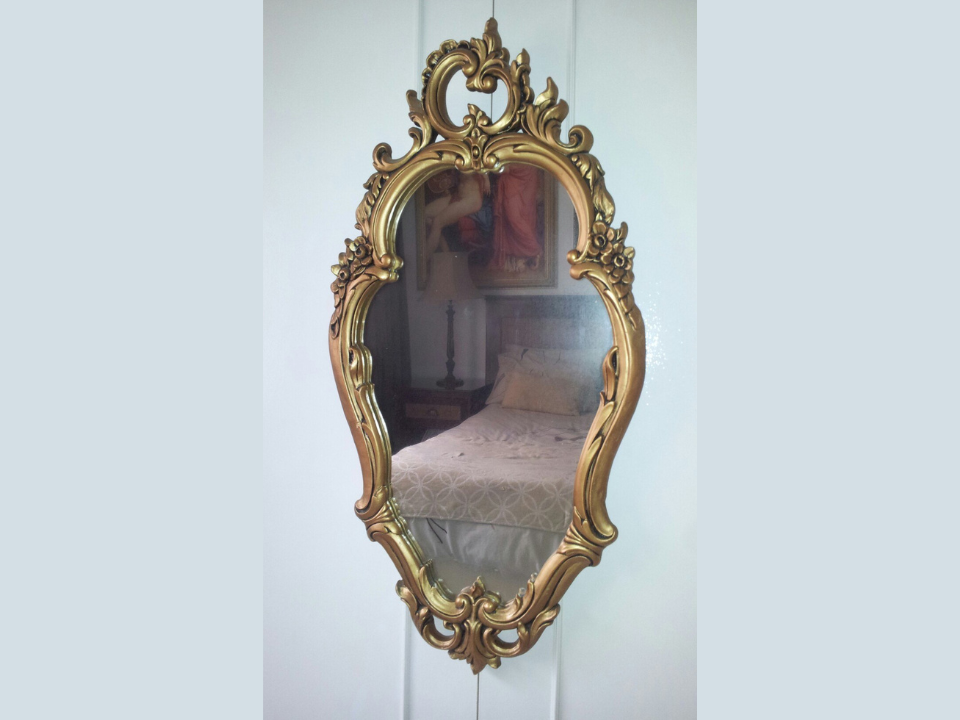
Originating from the 17th century, this mirror features an elaborate frame adorned with intricate carvings of acanthus leaves and scrolls. The gilded wood finish gives it a rich, opulent appearance, characteristic of the Baroque period’s emphasis on grandeur.
Such mirrors were often placed in grand entryways or overmantels, serving both functional and decorative purposes. Their ornate frames reflect the era’s artistic achievements and the owner’s wealth and taste.
Estimated Market Value: $2,000–$10,000
Rococo Oval Mirror with Floral Motifs

This mid-18th century mirror showcases the Rococo style’s playful elegance, with its asymmetrical frame featuring delicate floral carvings and soft curves. The light, airy design contrasts with the heavier Baroque style, focusing on grace and natural forms.
Often found in French salons, these mirrors were designed to complement the intimate and ornate interiors of the time. Their intricate details and soft hues make them a cherished piece for collectors and interior designers alike.
Estimated Market Value: $1,500–$5,000
Victorian Walnut Pier Mirror

This mirror, crafted in the late 19th century, features a rich walnut frame with detailed carvings of floral and geometric patterns. The pier mirror design, often used in narrow hallways, reflects the Victorian era’s appreciation for craftsmanship and symmetry.
The dark wood and detailed carvings are indicative of the period’s fascination with nature and the Gothic Revival movement. Such mirrors were not only functional but also served as statement pieces in Victorian homes.
Estimated Market Value: $800–$3,000
Federal-Style Eagle Mirror
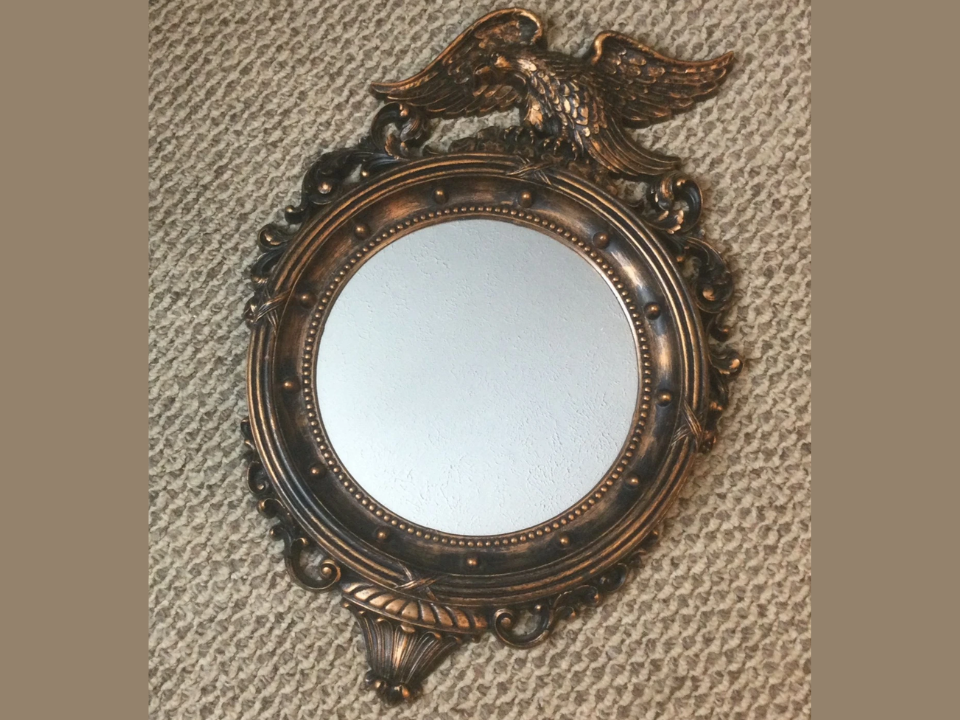
Dating back to the early 19th century, this mirror features a carved eagle perched atop a shield, a symbol of American patriotism during the Federal period. The frame’s clean lines and neoclassical motifs reflect the era’s admiration for ancient Roman and Greek designs.
These mirrors were often used in formal settings, such as dining rooms or entryways, symbolizing the nation’s emerging identity and values. The eagle motif remains a popular emblem in American decorative arts.
Estimated Market Value: $1,500–$5,000
Louis XVI Giltwood Mirror

This mirror, dating from the late 18th century, features a symmetrical frame with restrained neoclassical elements, such as laurel wreaths and urns. The gilded wood finish adds a touch of opulence without overwhelming the design’s simplicity.
Popular in French aristocratic circles, these mirrors were often placed in salons and drawing rooms, reflecting the period’s emphasis on order and refinement. Their timeless elegance makes them a sought-after piece among collectors.
Regency Convex Girandole Mirror

Emerging in the early 19th century, this mirror features a convex glass surrounded by a frame with candle arms, often adorned with gilded decorations. The design reflects the Regency era’s fascination with classical antiquity and opulence.
These mirrors were typically placed in drawing rooms or entryways, serving both as a source of light and a decorative focal point. Their combination of functionality and grandeur makes them a prized possession for antique enthusiasts.
Estimated Market Value: $1,000–$4,000
Chippendale Carved Mahogany Mirror
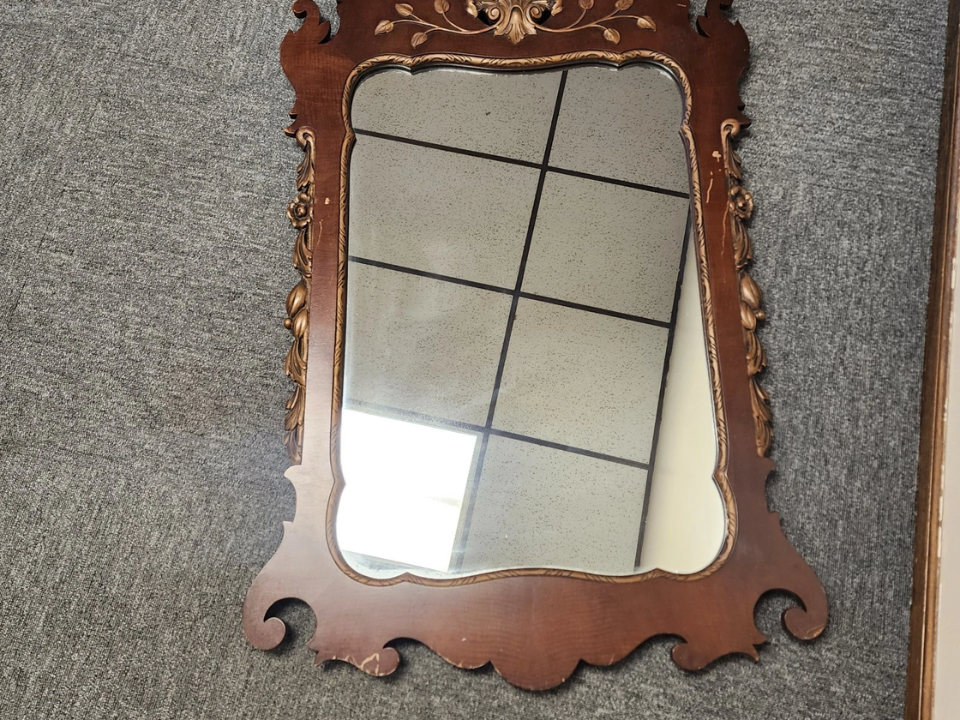
Crafted in the mid-18th century, this mirror features a finely carved mahogany frame with intricate designs, including acanthus leaves and scrolled edges. The Chippendale style, named after English cabinetmaker Thomas Chippendale, emphasizes elegance and craftsmanship.
Popular in both England and America, these mirrors were often used in formal settings, such as dining rooms and parlors. Their detailed carvings and rich wood tones continue to be admired by collectors and interior designers.
Estimated Market Value: $1,200–$4,500
Rococo Revival Giltwood Mirror
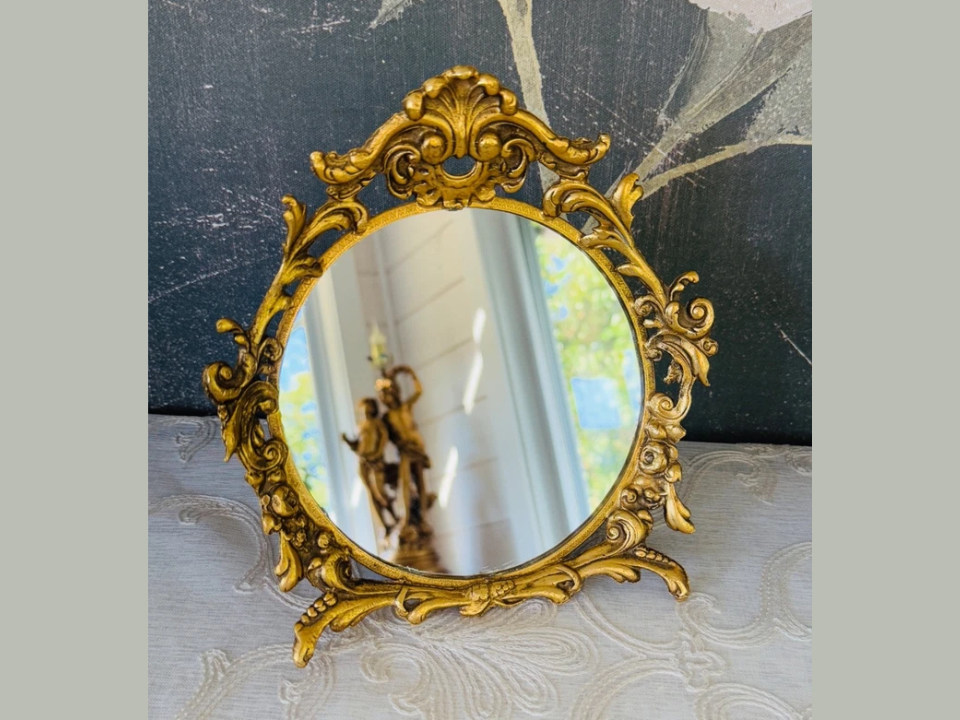
This mid-19th century mirror showcases the Rococo Revival style’s ornate frame with elaborate carvings of shells, scrolls, and floral motifs. The gilded finish adds a touch of luxury, reflecting the period’s fascination with 18th-century French design.
These mirrors were often used in Victorian parlors and drawing rooms, serving as both functional objects and decorative statements. Their exuberant designs continue to captivate antique enthusiasts.
Estimated Market Value: $1,000–$3,500
Edwardian Silver-Plated Mirror
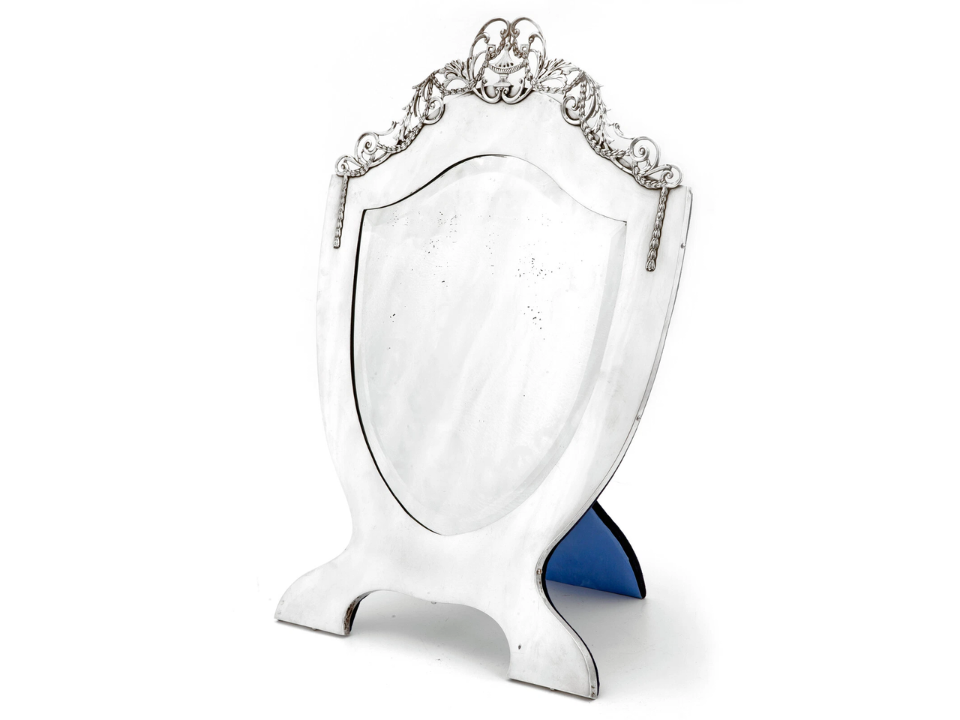
From the early 20th century, this mirror features a silver-plated frame with subtle Art Nouveau influences, characterized by flowing lines and organic forms. The Edwardian era’s emphasis on elegance and simplicity is evident in the design’s understated beauty.
These mirrors were popular in bedrooms and dressing rooms, offering a touch of refinement to personal spaces. Their combination of functionality and style makes them a timeless addition to any collection.
Estimated Market Value: $500–$2,000
Carved Walnut Pier Mirror

This mirror, crafted in the mid-19th century, features a richly carved walnut frame with intricate detailing. The pier mirror design, characterized by its narrow profile, was ideal for placement in hallways, reflecting both light and space.
The deep tones of the walnut wood and the elaborate carvings make this piece a striking addition to any room. Its elegant design reflects the craftsmanship of the Victorian era.
Estimated Market Value: $800–$3,000
French Louis XVI Giltwood Mirror

Originating from the late 18th century, this mirror showcases the neoclassical style with its symmetrical design and motifs such as laurel wreaths and ribbons. The gilded wood frame adds a touch of luxury, characteristic of French aristocratic interiors.
These mirrors were often placed in salons and drawing rooms, serving as both functional objects and decorative statements. Their timeless elegance continues to captivate antique enthusiasts.
Estimated Market Value: $2,000–$6,000
Victorian Overmantel Mirror

This large mirror features a deeply carved wooden frame with floral and scroll motifs, typical of the Victorian era’s ornate style. The overmantel design allowed for placement above fireplaces, enhancing the grandeur of the room.
The dark wood finish and intricate carvings reflect the period’s appreciation for detailed craftsmanship. Such mirrors were often the focal point in Victorian parlors.
Estimated Market Value: $1,000–$4,000
Louis Philippe Giltwood Mirror
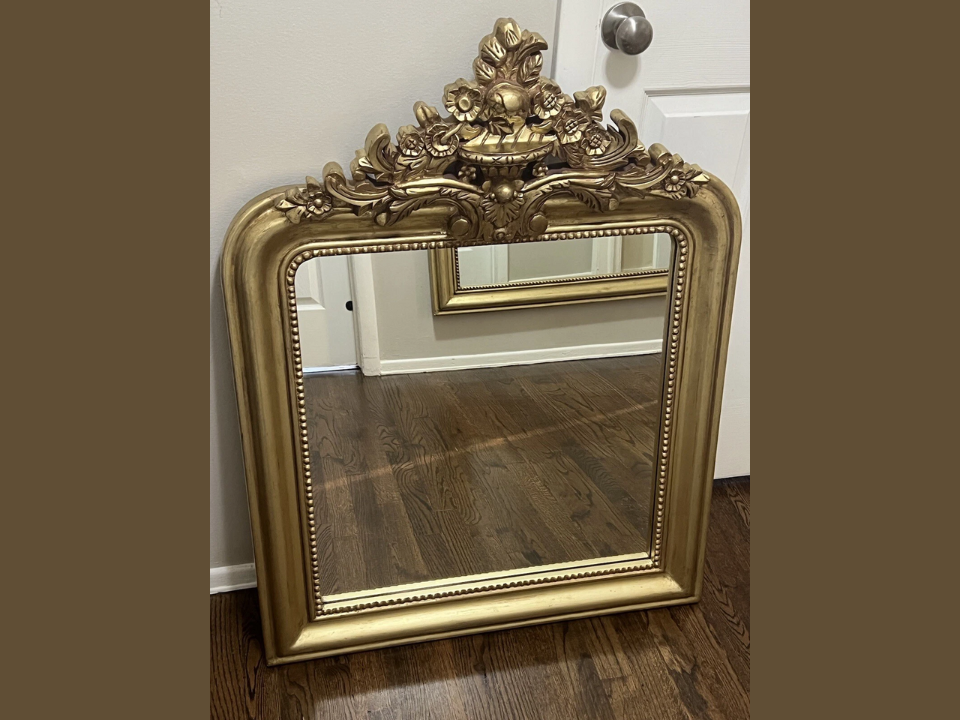
Originating from the mid-19th century, this mirror features a simple yet elegant design with a gilded wood frame. The Louis Philippe style emphasizes clean lines and understated ornamentation, reflecting the period’s shift towards more restrained aesthetics.
These mirrors were commonly used in French interiors, serving as both functional pieces and decorative accents. Their timeless design continues to complement various interior styles.
Estimated Market Value: $1,000–$3,000
This article originally appeared on Avocadu.
